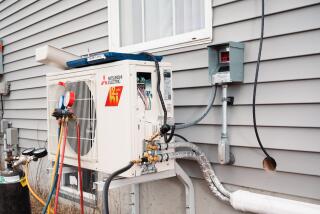Gas usage and global warming
- Share via
Re “Fuel for thought,” editorial, Jan. 25
The cheapest, fastest and most achievable way to reduce gasoline consumption by 20% is to drive 20% less. That’s taking one in five trips by bicycle or on foot, or maybe not even taking the trip at all.
In a nation where more than half of all trips are less than 3.1 miles in length, use of nonmotorized transportation is well within the reach of many people. Besides, the exercise benefit of self-powered travel would dovetail nicely into plans for better healthcare by increasing overall fitness and reducing demand for healthcare services.
Increased spending on serious and meaningful efforts to make our streets more friendly and safe for bicyclists and pedestrians would go a long way in solving our transportation oil addiction without the rippling economic effects that an ethanol-based transportation corn addiction would cause to our food supply and pesticide-sensitive farm environment.
ERIC BERGERSON
Los Angeles
*
I would add to the proposals by Sens. Barbara Boxer and Dianne Feinstein that the school curriculum include a class on global warming and environmental sciences.
This class would help the next generation understand the dire consequences of global warming and help it develop the values and awareness to take the necessary steps to curtail carbon dioxide emissions.
It is the next generation that will suffer the consequences of uncontrolled global warming. It deserves to know what will happen if it doesn’t take the necessary steps.
YENNY NUN
Pacific Palisades
More to Read
Sign up for The Wild
We’ll help you find the best places to hike, bike and run, as well as the perfect silent spots for meditation and yoga.
You may occasionally receive promotional content from the Los Angeles Times.






